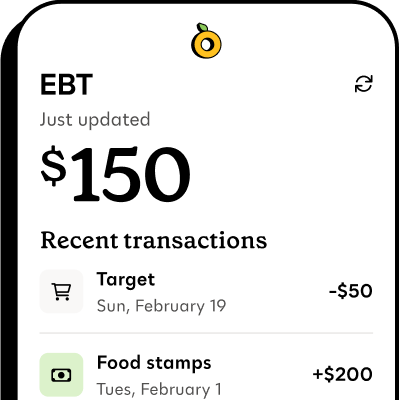Who's eligible for WIC? What to know about qualifying for WIC

If you’re pregnant or postpartum, have a baby, or are caring for a child under the age of five, you may be eligible for WIC, even if you’ve never used government assistance programs before.
WIC, which stands for Women, Infants, and Children, is a government program that helps income-eligible families buy healthy groceries, get nutrition support, and access services like breastfeeding counseling and health screenings.
Many families may qualify for WIC and not even realize it—here’s a simple breakdown of who’s eligible for WIC and how to apply.

Propel is the #1-rated EBT balance checking app
Who is eligible for WIC?#who-is-eligible-for-wic
WIC was created to support the health of people who are pregnant and postpartum, along with babies and children under five who may be at risk of poor nutrition.
To qualify, you must meet both “categorical eligibility” and income requirements.
That means you have to both be in a category of people who can get WIC, like new parents or children under five, and also meet the income rules and nutritional risk requirement, which is something a health professional will help determine during your application process.
Here’s who may qualify for WIC under categorical eligibility:
- Anyone who is pregnant: You can qualify for WIC as soon as you find out you’re pregnant. WIC can support you throughout your pregnancy and after delivery. The benefits can help you get the nutrition you need while pregnant.
- Postpartum parents: If you recently had a baby and are not breastfeeding, you may be eligible for WIC benefits for up to six months. If you are breastfeeding, you may qualify until your infant’s first birthday.
- Infants (0–12 months): Babies under one year old are eligible for WIC. WIC can help caregivers provide formula, baby food, and other infant-appropriate foods.
- Children (1–5 years old): Kids under age five can also receive WIC benefits if their family qualifies. These benefits might include foods like milk, whole grains, eggs, fruits, and vegetables, along with access to screenings and other health supports.
What income do you need to qualify for WIC?#what-income-do-you-need-to-qualify-for-wic
To qualify for WIC, your household income must be at or below a level set by your state agency.
The maximum household income your state can allow is 185 percent of the federal poverty level. The federal poverty level is adjusted annually, but here are the WIC income limits for July 2025 to June 2026:
| Household size | Annual income | Monthly income | Weekly income |
|---|---|---|---|
| Family of 1 | $28,953 | $2,413 | $557 |
| Family of 2 | $39,128 | $3,261 | $753 |
| Family of 3 | $49,303 | $4,109 | $949 |
| Family of 4 | $59,478 | $4,957 | $1,144 |
| Family of 5 | $69,653 | $5,805 | $1,340 |
| Family of 6 | $79,828 | $6,653 | $1,536 |
| Family of 7 | $90,003 | $7,501 | $1,731 |
| Family of 8 | $100,178 | $8,349 | $1,927 |
| Each additional family member | + $10,175 | + $848 | + $196 |
You may automatically qualify for WIC if you or your child already receives:
- SNAP (food stamps)
- Medicaid
- TANF (Temporary Assistance for Needy Families)
WIC counts your whole household together, so the more people living and eating together, the higher your income limit will be. To check your state’s income eligibility limits for WIC, contact a local WIC office in your state.
What does "nutritional risk" mean for WIC?#what-does-nutritional-risk-mean-for-wic
In addition to income, a health professional will screen for nutritional risk, free of charge (this usually happens at your WIC appointment).
This usually includes taking your height and weight and bloodwork, at a minimum.
Nutritional risk might include things like:
- Low weight or slow growth in a child
- Anemia or low iron
- A poor diet or limited access to nutritious foods
- Complications during pregnancy
These screenings are quick, free, and usually offered as part of your regular WIC appointment. However, you may be able to see your regular health provider to get screened if that is your preference.
How to apply for WIC#how-to-apply-for-wic
There’s no national WIC application—you have to apply through your local WIC office. Here’s how to get started:
- Find your local WIC office: Go to this website to find a WIC clinic near you
- Call and make an appointment: WIC clinics will schedule a time for you to come in—some states also allow phone or virtual appointments
- Bring your documents: The WIC clinic will tell you what to bring to your appointment. Typically you’ll need to bring proof of identity (like a driver’s license, birth certificate, or Medicaid card), proof of income (pay stubs or benefit letters), proof of residency (a bill or letter with your name and address), and proof of pregnancy or your child’s birth certificate
- Attend your WIC appointment: You or a child you care for will get a quick health screening and talk to a WIC counselor
Once your application is approved, you’ll get your WIC benefits. Read more about how to apply for WIC here.







